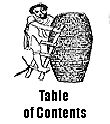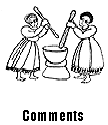
|
“FiQir Iske MeQabir” - An Ethiopian Masterpieceby: Haeran FissehaIf there is a novel that is almost universally recognized in Ethiopia it is “FiQir Iske MeQabir”. Many of us have been captivated by Wegayehu Nigatu’s unforgettable reading of the book on Ethiopian radio (and would kill for a complete book’s on tape series). Some of us listened attentively as it was read in class, there may even be some of the over-achieving ones amongst us who chose this book for a school book-review project. For me “FiQir Iske MEQabir” had always been an intimidatingly thick volume, and a classical bit of literature that I would attempt to read some day … just not yet. Some 16 years after leaving Ethiopia, it suddenly occurred to me, that after years of reading books by the great authors of Russia, Nigeria, India, Brazil, and America, I had yet to read what is probably the greatest Ethiopian novel. Ashamed by this realization and emboldened by my recent completion of a couple of other excellent Amharic books, I picked up Ato Haddis Alemayehu’s masterpiece. Reading “FiQir Iske MeQabir” was more like a journey, an experience. Every night after a long day at work, Hadis Alemayehu transported me to Gojjam, to the villages of Mankusa, Dima, and Bichena, where I anxiously followed the lives of Bezabih, Gudu Kassa, Fitawrari Meshesha, Woizero Tiru Aynet and Seble Wengel. Ato Haddis’ writing makes his characters come alive and it was not long before I could vividly picture the villages and the people. His storytelling draws the reader into the story and elicits strong emotions. I could not help but pray for Bezabih, burst in outrage at Fitawrari Meshesha, cheer for Seble, high-five Gudu Kassa, and loathe Qes Mogesé (the “yes-man” of his time !) But in the process I also learned much about the experiences of Ethiopians, and our culture (the good, the bad and the ugly). I think I understand a little better about what has changed in our society and what still needs to change. I also have a better perspective on why it is so difficult to bring about change. Ato Haddis intentionally communicates some profound messages about our society even as he unfolds the greatest love story I have ever heard. Ato Hadis spins a tale of a pure and innocent love between two young people, Seble and Bezabih, that is frustrated by the obsessions of Seble’s parents with maintaining/elevating their social class and lineage. This pursuit leaves Fitawrari Meshesha and Woizero Tiru completely blind to the true value of people, and renders them incapable of appreciating the depths of real love. In the process, they destroy the life of their only daughter. While telling this story, Ato Hadis gives us a glimpse of life in rural Ethiopia. Through his colorful characters and his amazing storytelling abilities, we get a flavor for the beauty and warmth of Ethiopian culture, the charity and hospitality of the average villager, and the courtesy, kindness, and love people in rural Ethiopia have for each other. Following Bezabih around from Qine Bet to Qine Bet, we get a picture of the life of Temé Temari in the villages of Ethiopia, as he progresses from a DiaQon to a famous LiQ and Qine Astemari and to being called Meri Geta Bezabih. We see how a temari depended on, and always received the support of his community in every village he went. We also see how a tired traveler could always count on the hospitality of villagers. When the mysterious Abba Alem Leminé is exhausted from days of walking, he bumps into a stranger who asks him if he knows anyone in the next village and they have this conversation “.. ye Igziabher ingida negn sil bet aynefigugnim biyé new inji, yemawQew sewis yelegnim”, the stranger replies “yemiyawQut sew kelelema iné bet yadralu, bet le’gzer new” (p509) The stranger then puts the tired Abba on his horse and walks home where he and his wife fuss over Abba Leminé, feeding him and washing his dirty and bloody feet. But very importantly, Ato Hadis also shows us the ugly side of our history and culture, and the narrow-mindedness that would lead two parents who loved their daughter to rob her of her happiness. When Fitawrari Meshesha finds out that his daughter loves Bezabih he angrily says to her “Yené lij yan ikekam yelemagn geberé lij atwejim. Zeru babat benatu yeTera badebabay yemiyakora yetalaQ sew lij talaQ mekonin leminogn Qal seTiche meTichalehu” to which the normally quiet Seble replies “ geberém sew new. Ye geberé lijim yesew lij new. Ye mekwanint zer Tiru, ye geberé zer gudif mehonun awQo yemimerT yichegeribet ! Iné yegeberé lij yemilutin iwedewalehu”. Fitawrari Meshesha is incapable of understanding Seble’s love that transcends class and explodes “Ya metetam asmategna debtera, ya TenQuay, belijé asmat azurobat new beTenawa indih alhonechim ! Gidélem yinga !” (p 410- 411) and he launches a campaign to find and punish Bezabih and make him reverse his asmat. By now Seble has abandoned her usually courteous and deferential demeanor and she warns her father “Kezare jemirew yiweQut, nefsina sigayé abrew iyalu lemalfeligew sew minim bihon alisheTim ! Résayé waga ayaweTalachihum inji besu indefelegachihu teCHawetu”. In addition to this narrow-mindedness, along the way Ato Haddis also illustrates other unsavory characteristics that were common in Ethiopian culture. The complete disrespect that the powerful showed to the commonfolk, and their disdain for them is evident in the way Woizero Tiru addresses Habtish, their maid. When ordering Habtish to stay with Seble while Bezabih tutored her, Woizero Tiru would routinely warn her “Wa, anchi Ahiya, Anchi Timbatam, kezih tilaweshina…” (p308). The abuse of power by those who were positioned to govern the people is shown in the way Fitawrari Meshesha reacts to a delegation of villagers who came to tell him that while they would continue to give him the customary gifts and fees, they could no longer keep up with his new demands. He reacts by planning to march on the villages and beat them into submission and he explains it thus “Balager adimo manin ashenifo yawQal ? Balager dekama aywedim, balager birtu yiwedal. Be balager lay ijihin maTenker bicha new yalebih. Ijih keTenekere balager talbo ayafejim, ganih iskimola litalbew tichilaleh” (p217). Ato Haddis also illustrates the Emperor’s disrespect for the people in Bezabih’s reflection on his experience eating ye Negus gibir. In an amazingly frank and bold criticism of the emperor, Ato Haddis talks to us via Bezabih “Ere lemehonu, mulu ItyoPyan iyegezu kezya yeteshale injerana woT aTtew new sewin be negarit Tertew indya yale neger aKirbew bilu yemilu ? weyis sewin indesew bayKoTrut new ?” (450) The refusal of both the powerful and powerless to listen to new ideas, and to entertain the possibility that maybe the status quo could and should be changed and improved is seen in the way Kassa DamTe, a noble by birth, is marginalized and labeled by the rich and poor alike. Kassa, who is referred to as Gudu Kassa for his progressive thoughts, explains to Bezabih “ Ayeh ? ketelemedew liyu ye hone hulu inde gud metayetu inkwa minim bihon ayQerim. Bicha yemiyasazinew ya ketelemedew liyu bemehonu gud yetebalew, liyunetu bemelkam weyis bekifu menged mehonun mamezazen bemaychil hizb mehakel menoru, melkamu ke kifu, yemiTeQmew kemigodaw sayley, ketelemdew liyu bemehonu bicha hulum bandinet tafino teshefino indihu meQretu new. Ketelemedew yeteleye melkam hasab weyim melkam sira, legizew inkwa bayagelegil, gizew siders indiyagelegil, teTebiQo, tesheshigo yemiQoy bihon, kasabiw weyim keseriw gar abro yemayalf bihon melkam neber” (p 369). There is no question that Ato Haddis was way ahead of his time in his thinking. He speaks to us through his character Gudu Kassa, of the need to always re-evaluate ourselves and our society, to keep the good and discard the bad. He teaches us to never to resign ourselves to our fate as dictated by the norms of our society, but to aspire to change those norms when they are too narrow to appreciate the true value of people. He also wisely advises us that even as we change and improve we should never forget where we came from so we know how far we have come. He sees writers as having the role of reminding society of what had been, a task he himself has executed very well. In the MeQdim he explains “….yemiwdQew kifu limad kesira yiwegedal inji ketarik tsehafiwoch metsehafina kederasiwoch direst liweged ayigebawim. Yalezya beyegizew yemideregew yepoletikam hone yemahaberawi nuro meshashal kemin tenesto imin inde derese litaweQ ayichalim.” Ato Haddis was a remarkable man. He was an anti-Italian guerilla fighter with Ras Imru and was imprisoned in Italy. He then returned to Ethiopia after Haile Sellasie was reinstated and served in various posts. One can only wonder if his prominence as a patriot is what allowed this novel, as radical as it was for it’s time, to be published. One also has to wonder how much has actually changed over the years. Sure for the most part the obsession with class and lineage is gone (though not completely), but how about Fitawrari Meshesha’s abusive attitude to the people he governed and his preference for the iron-fisted rule ? How about the Emperor’s disrespect for the people as illustrated by the way he treated them at ye Negus gibir (which by the way turns out to be mandatory)? Have we not continued to have rulers who fail to realize that their purpose is to serve the people not to use and abuse them ? In this colorful book Ato Haddis certainly also gives us some food for thought. The irony of my reviewing an Amharic book in English is not lost on me. But given the sad fact that I can express myself better in English (for now), I had no other choice. I have hoped to capture a little bit of the flavor and message of Ato Haddis’ writing by quoting extensively from his characters, but I know I can hardly do his book justice. Despite his humble assertion in the MeQdim, that FiQir iske MeQabir “… Tiru dirsetoch yemibalut beyazut dereja inkwanis litiders indematiQerb awKalehu” his book is truly a masterpiece, both in its writing style and its content. We are blessed to have had Ato Haddis Alemayehu pen this story for generations to read and learn from. |

|

|

|

|

|
| © Copyright SELEDA Ethiopia, January 2001. All Rights Reserved. |
